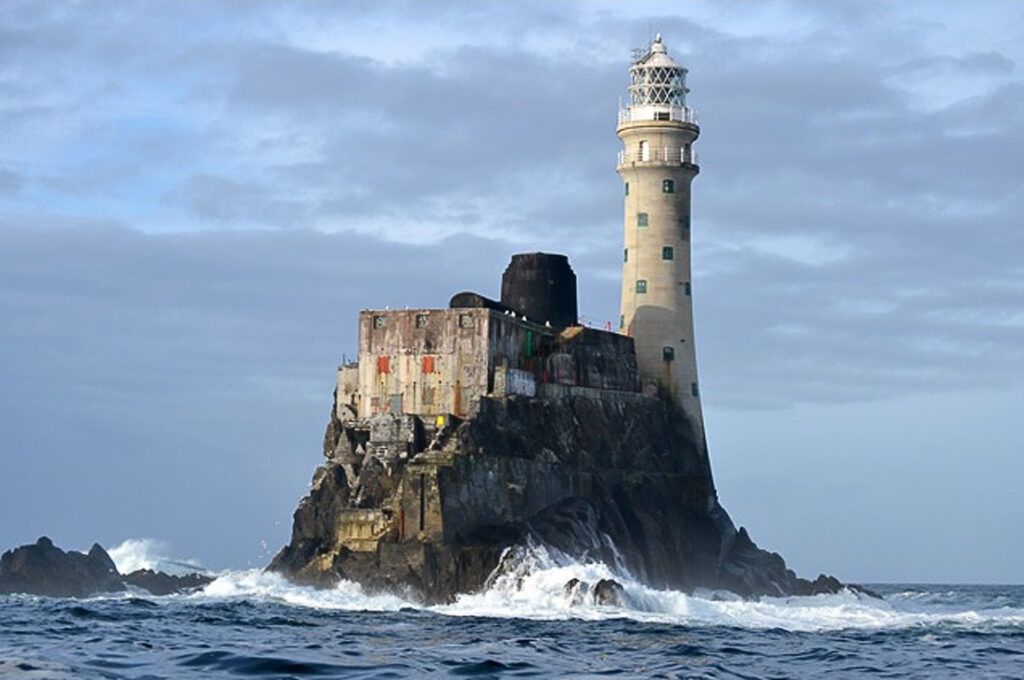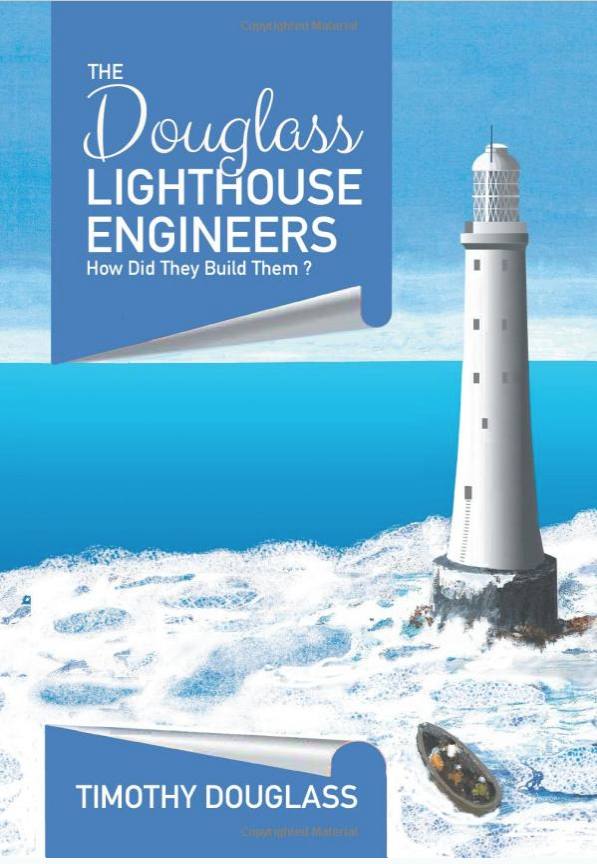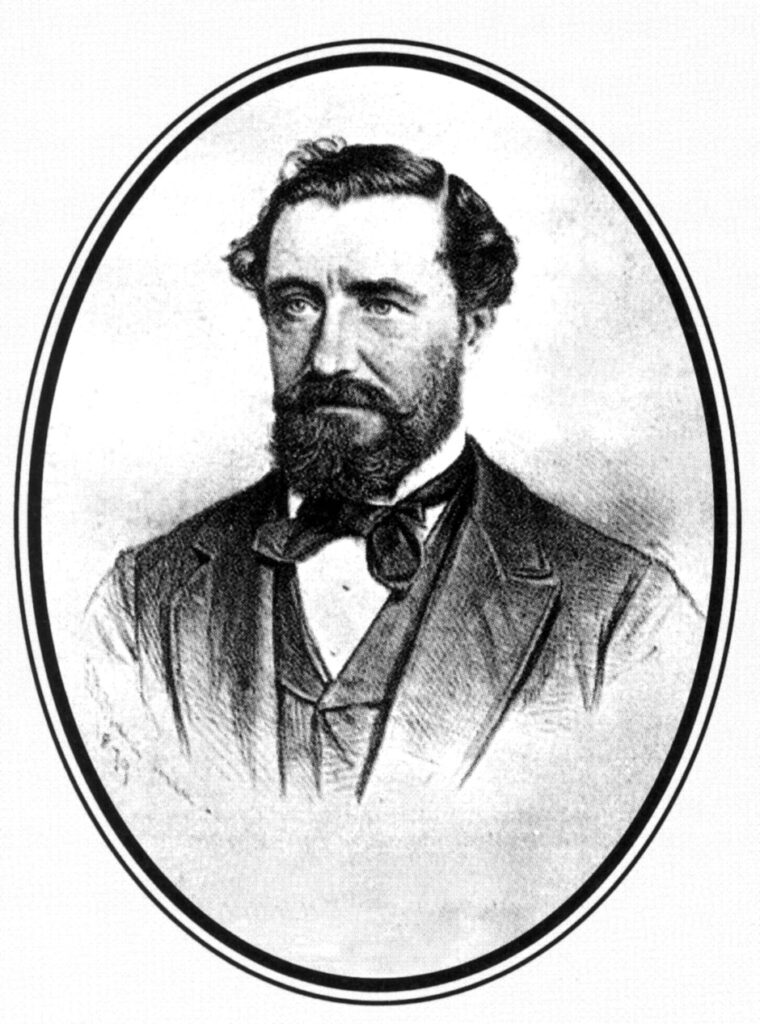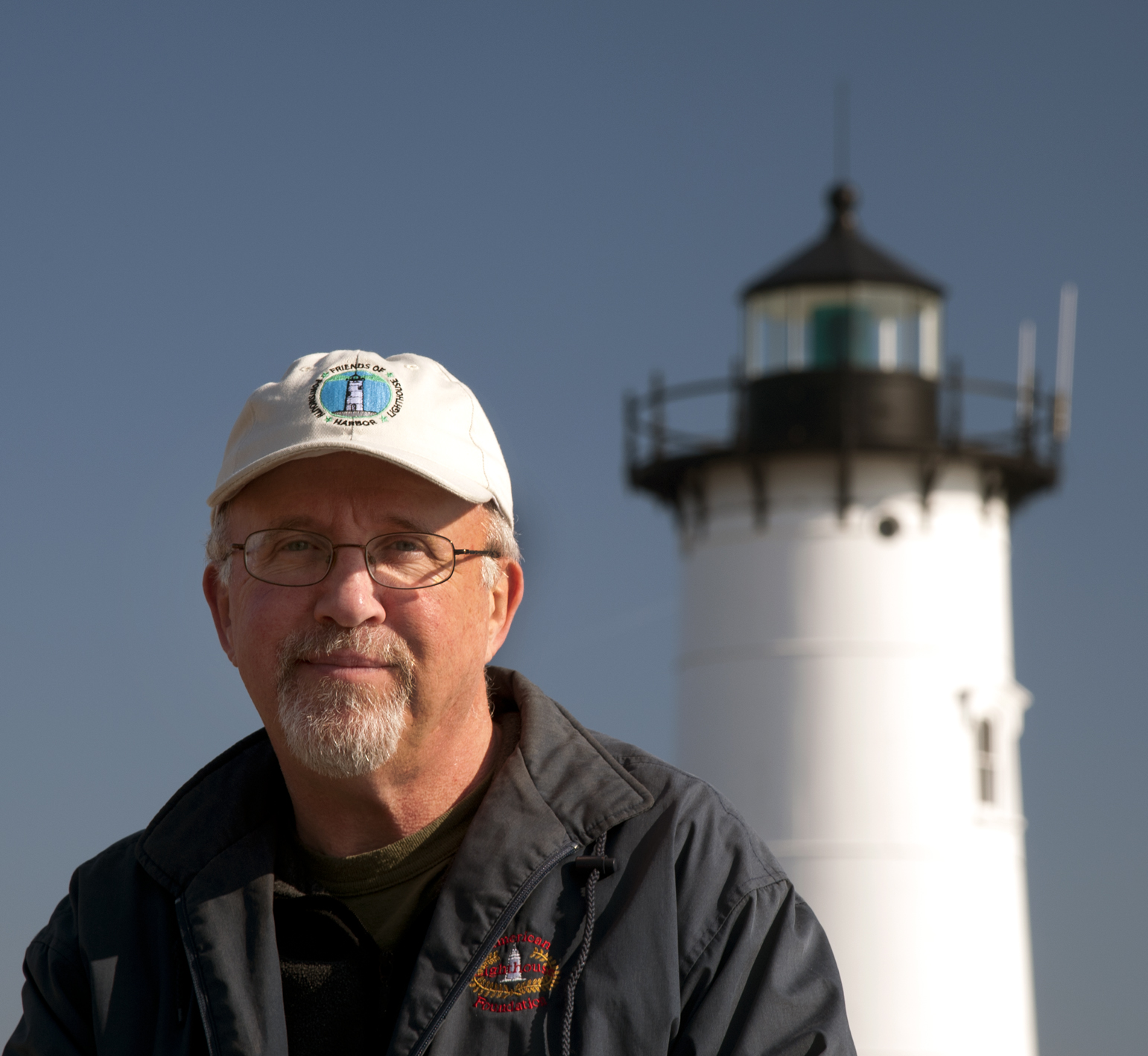This new book begins with the plight of Edward Ward, a BBC correspondent, who, with his sound technician, was stranded in the Bishop Rock Lighthouse following a Christmas Day broadcast in 1946. Their departure was delayed for a month by raging storms. After being rescued, he wondered, “How on earth did they manage to build the lighthouse, a massive granite tower rising over 160 feet (49m) almost straight out of the sea, in one of the roughest locations imaginable?”

The question is addressed in this book while covering the great lighthouse-building era in Britain of just over two centuries. Although the emphasis is on the work of three generations of Douglass lighthouse engineers during the second half of the nineteenth century, the parts played by many other people who contributed to making the seas safer are described. One was Michael Faraday, the eminent physicist, who was Trinity House’s scientific advisor for thirty years, who brought about the first practical use of electricity when an electric light was installed in the South Foreland Lighthouse in 1858.

Much of the book is devoted to lighthouses built out to sea on small wave-swept rocks because of the tremendous challenges faced in building them. These range from the first lighthouse built on the Eddystone Rocks in the English Channel south of Plymouth, completed in 1699, to William Douglass’s massive granite tower on the Fastnet Rock off southwest Ireland, completed in 1904.
The exceptional dedication and perseverance by those who were willing to work in very hazardous and uncomfortable conditions, often putting their lives at risk, is described, and remarkably few lives were lost.

(U.S. Lighthouse Society archives)
The author, a great grandson of Sir James Douglass, best known for the Eddystone Lighthouse, was born in Cornwall, England. With a Masters Degree in Engineering and an MBA, he followed a career as a professional engineer in the aerospace industries in both England and Canada. Retired, he lives with his wife, Patricia, in Canada. This book is the product of an extensive review of the work of his ancestors and research into the history of lighthouses and their construction.
Click here to buy the book on Amazon

Jeremy D’Entremont is the author of more than 20 books and hundreds of articles on lighthouses and maritime history. He is the president and historian for the American Lighthouse Foundation and founder of Friends of Portsmouth Harbor Lighthouses, and he has lectured and narrated cruises throughout the Northeast and in other regions. He is also the producer and host of the U.S. Lighthouse Society podcast, “Light Hearted.” He can be emailed at Jeremy@uslhs.org

